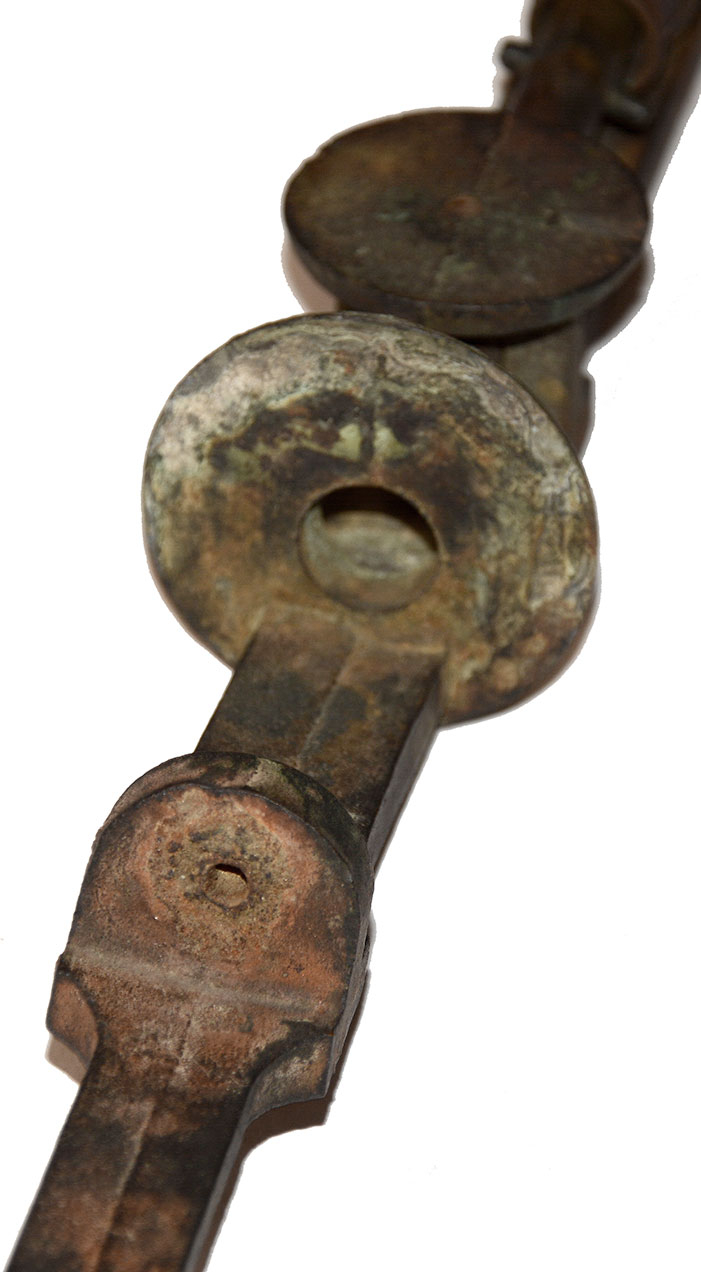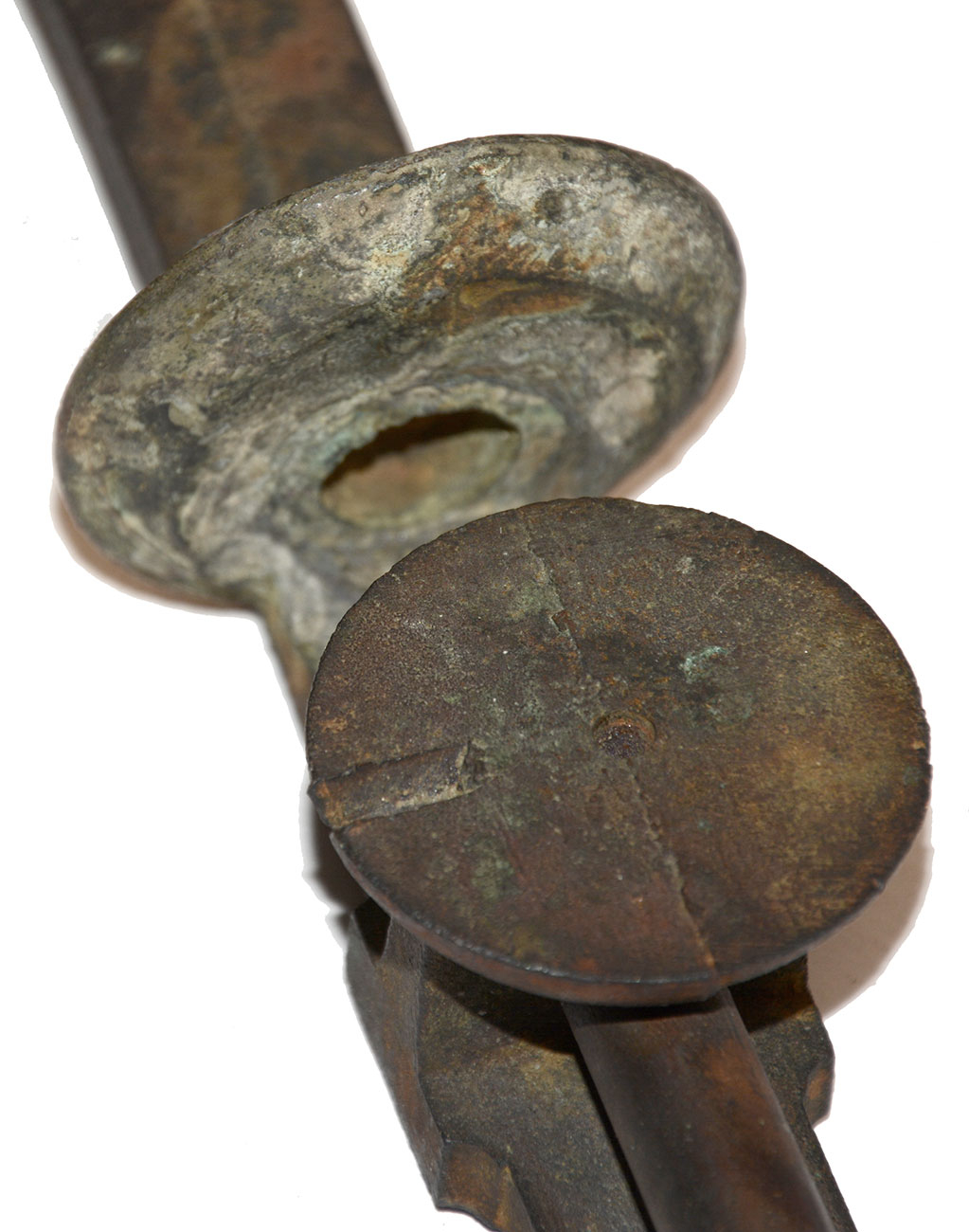site search
online catalog
ULTRA-RARE CONFEDERATE SINGER-FRETWELL TORPEDO FUZE INVENTED BY THE SINGER SEWING MACHINE FAMILY AND USED AT THE BATTLE OF MOBILE BAY

Hover to zoom







$3,750.00
Quantity Available: 1
Item Code: 1179-666
Shipping: Determined by Method & Location of buyer
To Order:
Call 717-334-0347,
Fax 717-334-5016, or E-mail
Edgar C. Singer of Port Lavaca, TX, who invented this type of successful marine torpedo, was the nephew of famed Isaac Merritt Singer, the inventor of the first sewing machine. Singer turned to the local Masonic lodge in Port Lavaca for men to help construct the mines. His first recruit and partner in experiments was Dr. John R. Fretwell, a Texan as well, who helped Singer to improve this torpedo.
Commander Shea ordered Singer to report to General John Magruder at Houston, the Confederate Secretary of War; James Seddon authorized Captain Singer to organize a unit which Singer called “Singer’s Submarine Corps.” During the mining operations of Mobile Bay, Singer and Fretwell met fellow Masons; Baxter Watson, James McClintock, and Horace Hunley (the designer of the famous H.L. Hunley submarine that sank the USS Housatonic in Charleston harbor, making history as the first time a submarine sank an enemy ship.
The torpedo consisted of a soldered, galvanized sheet-metal container that was tapered with this brass ignition mechanism attached to the inside of the container and extending out from the base. When a ship struck the torpedo the iron safety weight was knocked from its position in the air chamber inside the torpedo thus activating the plunger by pulling the safety pin from the spring-loaded detonating rod. The brass spring-loaded plunger was released and struck against the percussion cap device inside the black powder charge inside the sealed container causing horrific damage to the s hip which struck it.
In July of 1863 the Confederate Navy examination board approved this torpedo design based upon its simplicity to manufacture and the high success rate of explosion. Singer-Fretwell torpedoes were reported to be second in numbers manufactured only to the Rains keg torpedoes. Singer received a Confederate patent for his torpedo design. This historic artifact is one of 3 known to exist and was recovered from where the Battle of Mobile Bay, AL took place. On August 5, 1864, Admiral David Glasgow Farragut won a great victory in the Battle of Mobile Bay. Mobile was then the Confederacy’s last major port open on the Gulf of Mexico. The bay was heavily mined (tethered naval mines were known as torpedoes at the time). Farragut ordered his fleet to charge the bay. When the monitor USS Tecumseh struck an underwater torpedo as this one and sank, the others began to pull back. Farragut could see the ships pulling back from his high perch, lashed to the rigging of his flagship USS Hartford. “What’s the trouble?” was shouted through a trumpet from the flagship to the USS Brooklyn. “Torpedoes!” was shouted back in reply. “Damn the torpedoes!” said Farragut, “Four bells. Captain Drayton, go ahead! Jouett, full speed!” The bulk of the fleet succeeded in entering the bay. Farragut then triumphed over the opposition of heavy batteries in Fort Morgan and Fort Gaines to defeat the squadron of CSN Admiral Franklin Buchanan.
This is the very Singer-Fretwell torpedo trigger that is illustrated in Jack Bell’s Heavy Artillery book. The photograph of the complete Singer-Fretwell torpedo is for display only, as it is in museum collection and how to illustrate how this fuze was used. Perhaps the rarest single item from the Confederate Navy – a torpedo fuze from the naval battle in which Farragut coined the most famous phrase in American naval history – “Damn the torpedoes!” [ph:L]
~~~~~~~~~~~~~~~~~~~~~~~~~~~~~~~~~~~
THIS ITEM, AS WITH ALL OTHER ITEMS AVAILABLE ON OUR WEB SITE,
MAY BE PURCHASED THROUGH OUR LAYAWAY PROGRAM.
CLICK HERE FOR OUR POLICIES AND TERMS.
THANK YOU!
Inquire About ULTRA-RARE CONFEDERATE SINGER-FRETWELL TORPEDO FUZE INVENTED BY THE SINGER SEWING MACHINE FAMILY AND USED AT THE BATTLE OF MOBILE BAY
Most Popular
Historical Firearms Stolen From The National Civil War Museum In Harrisburg, Pa »
Theft From Gravesite Of Gen. John Reynolds »
Selection Of Unframed Prints By Don Troiani »
Fine Condition Brass Infantry Bugle Insignia »
British Imported, Confederate Used Bayonet »
Scarce New Model 1865 Sharps Still In Percussion Near Factory New »
featured item
VERY SCARCE US GOVERNMENT PURCHASE MERRILL RIFLE
This Merrill breechloading rifle is one of just 566 contracted for by the US government in December 1861 and delivered from August through December 1862, inspected and marked by Zadock Butt, and known to have been issued to several Union regiments,… (490-7012). Learn More »


